Melanocortin (MC) Receptors
Melanocortin receptors (MCRs) comprise a family of five, class A, G protein-coupled receptors designated MC1R-MC5R with diverse physiological roles. MCRs are found in chordates and are regarded as having evolved from a single ancestral receptor, possibly corresponding most closely to MC4R. Signaling by MCRs has primarily been observed as occurring through the stimulatory α unit Gs which activates adenylyl cyclase to produce cAMP.
The central nervous melanocortin system is involved in energy homeostasis, regulating food intake and energy expenditure. The brain melanocortin system is defined as the primary neurons that express neuropeptide ligands, and secondary neurons expressing the predominant neural melanocortin receptors (MC3R, MC4R). Mutations in the gene encoding melanocortin receptor agonists, or the genes encoding MC3R or MC4R cause obesity. The other members of the melanocortin receptor family are primarily expressed in the periphery, and are involved in regulating pigmentation (MC1R), adrenal gland function (MC2R), immune function (MC1R/MC3R), and sebaceous gland activity (MC5R).
Produkte für Melanocortin (MC) Receptors
- Bestell-Nr. Artikelname Informationen
-
GC38007
β-Melanocyte Stimulating Hormone (MSH), human TFA
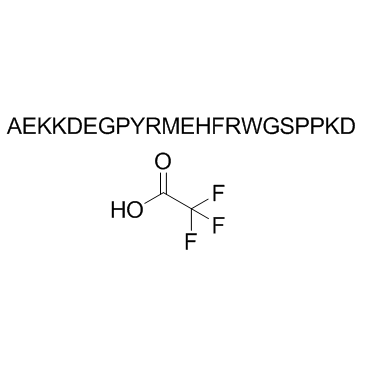
-
GC61462
γ-1-Melanocyte Stimulating Hormone (MSH), amide
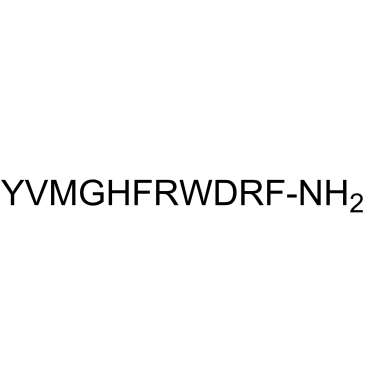
-
GC17002
γ1-MSH
γ1-MSH ist ein Melanocortin-MC3-Rezeptoragonist mit einem Ki von 34 nM fÜr den Ratten-MC3-Rezeptor.
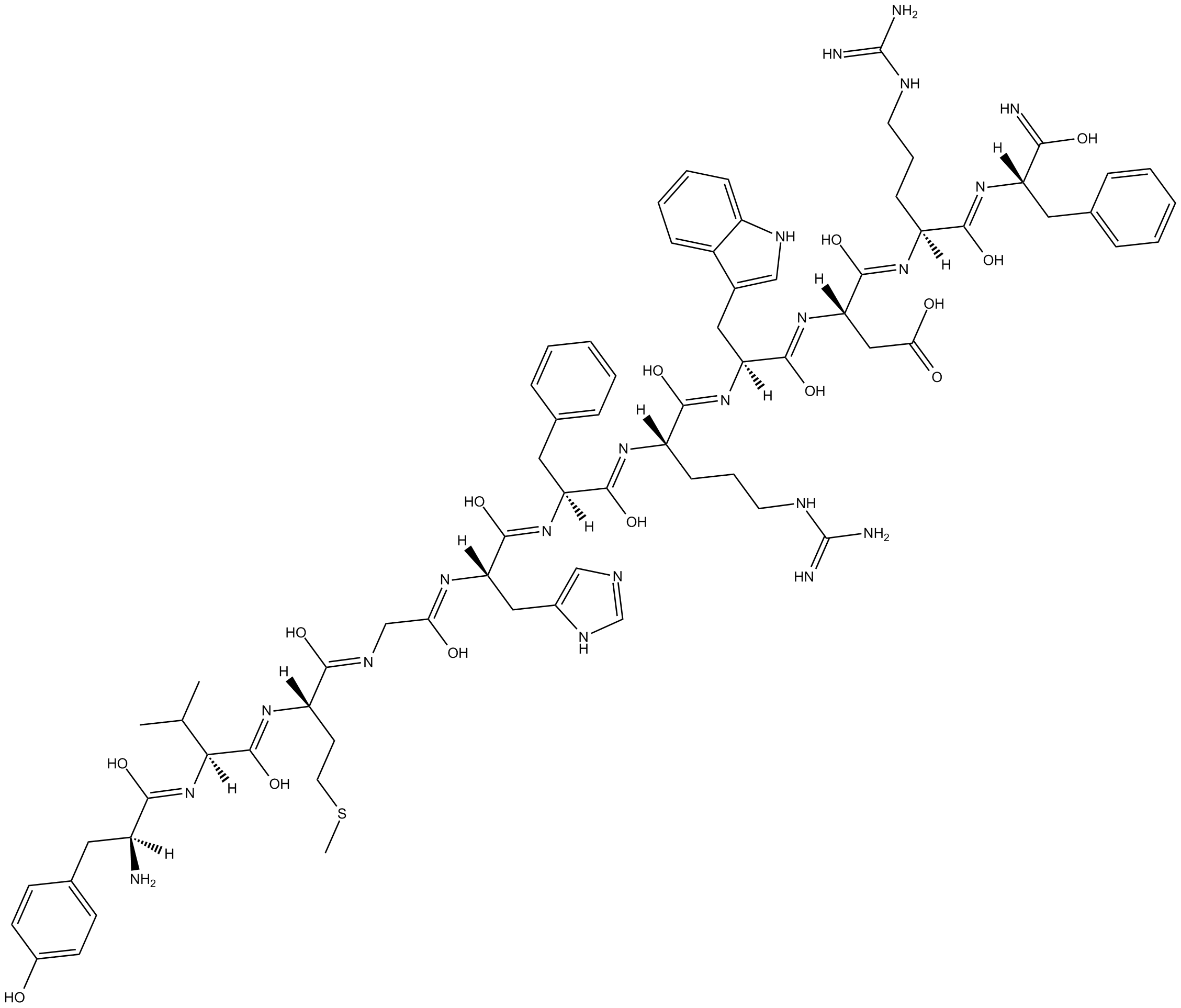
-
GC33693
β-Melanocyte Stimulating Hormone (MSH), human (Beta-MSH (1-22) (human))
β-Melanozyten-stimulierendes Hormon (MSH), human (Beta-MSH (1-22) (human)), ein Peptid mit 22 Resten, wirkt als endogener Melanocortin-4-Rezeptor (MC4-R)-Agonist.
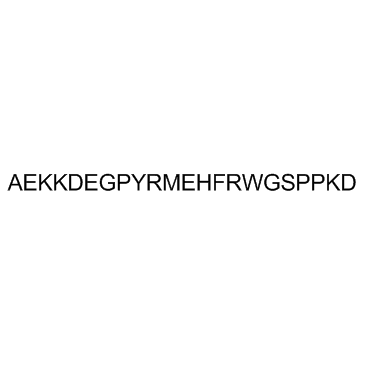
-
GC34231
γ-1-Melanocyte Stimulating Hormone (MSH), amide
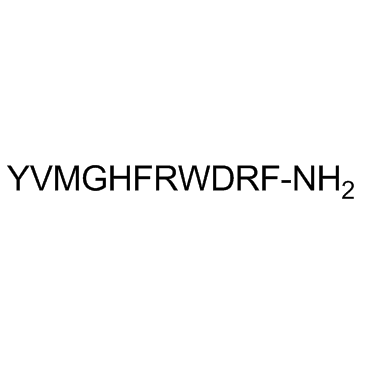
-
GC35244
ACTH (1-17) TFA
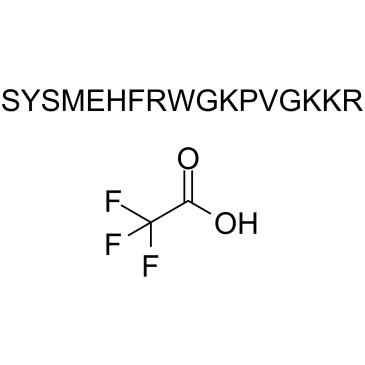
-
GC12239
ACTH (1-39)
ACTH (1-39) ist ein Melanocortin-Rezeptor-Agonist.
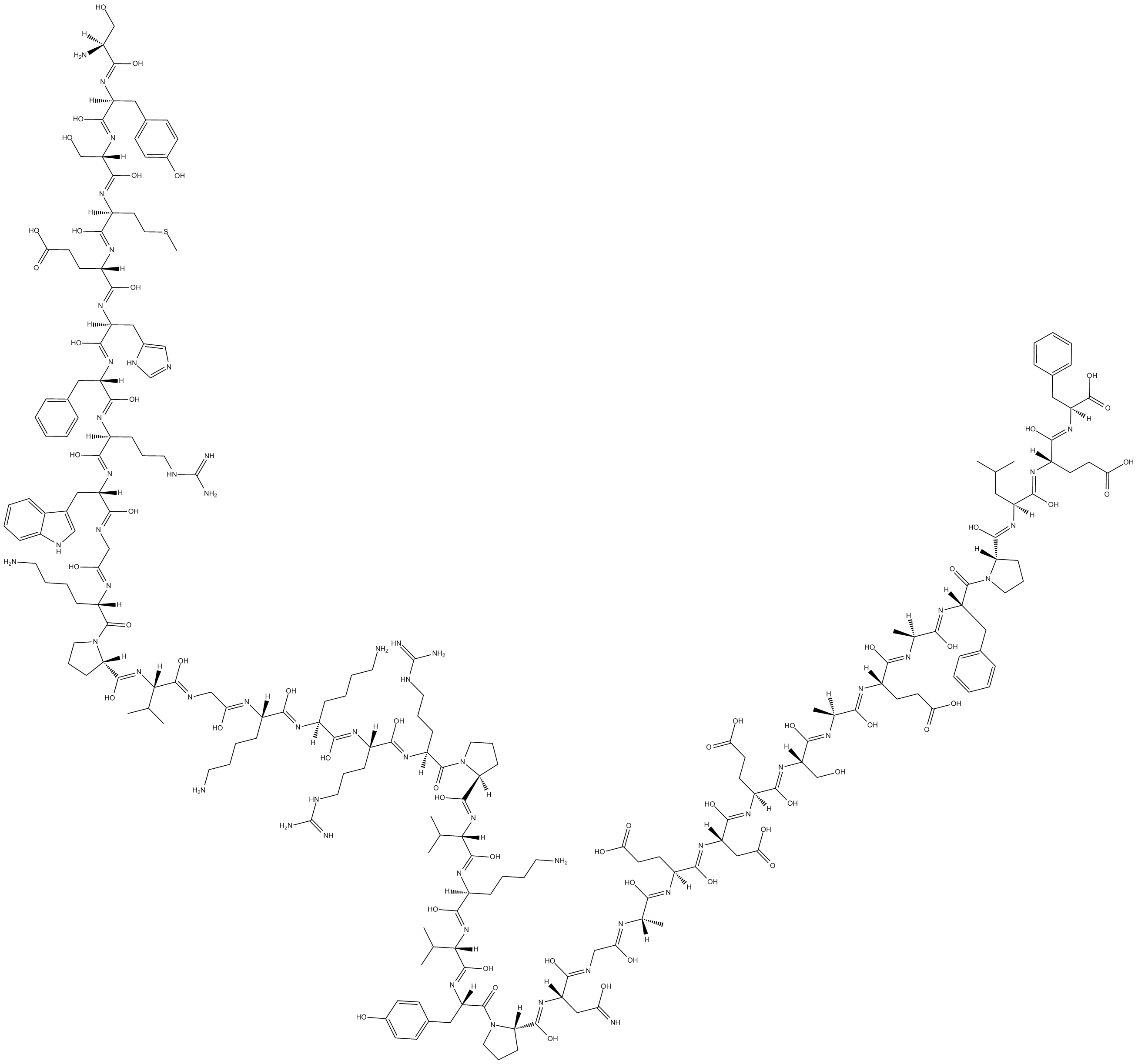
-
GC66383
ACTH (11-24) (acetate)
ACTH (11-24) (Acetat) ist ein Rezeptorantagonist des adrenocorticotropen Hormons (ACTH). ACTH (11-24) ist ein Fragment von Adrenocorticotrop und induziert die Freisetzung von Cortisol. ACTH (11-24) kann fÜr die Erforschung des Zentralnervensystems verwendet werden.

-
GC31109
ACTH 1-17 (α1-17-ACTH)
ACTH 1-17 (α1-17-ACTH), ein Adrenocorticotropin-Analogon, ist ein potenter humaner Melanocortin-1 (MC1)-Rezeptoragonist mit einem Ki von 0,21 nM.

-
GC31954
ACTH 11-24 (Adrenocorticotropic Hormone (11-24))
ACTH 11-24 (Adrenocorticotropes Hormon (11-24)) ist ein Rezeptorantagonist des adrenocorticotropen Hormons (ACTH).
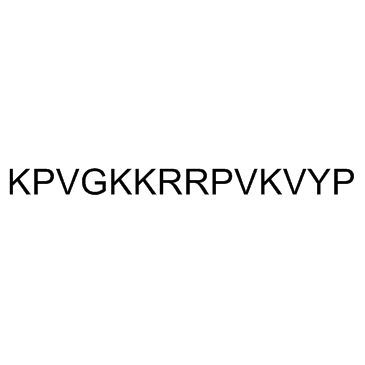
-
GC35254
Adrenocorticotropic Hormone (ACTH) (1-39), rat
Adrenocorticotropes Hormon (ACTH) (1-39), Ratte, ist ein potenter Melanocortin 2 (MC2)-Rezeptoragonist.
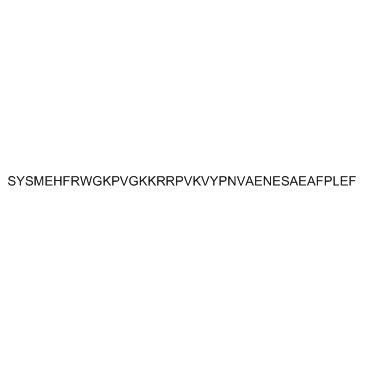
-
GC35255
Adrenocorticotropic Hormone (ACTH) (1-39), rat TFA
Adrenocorticotropes Hormon (ACTH) (1-39), Ratte (TFA) ist ein potenter Melanocortin 2 (MC2)-Rezeptoragonist.
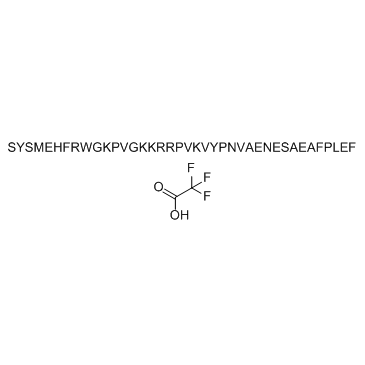
-
GC34002
Bremelanotide Acetate (PT-141 Acetate)
Bremelanotidacetat (PT-141-Acetat) (PT-141-Acetat), ein synthetisches Peptidanalogon von ⋱-MSH, ist ein Agonist an Melanocortinrezeptoren, einschließlich MC3R und MC4R, zur Behandlung von sexueller Dysfunktion.

-
GC64525
Fenoprofen
Fenoprofen (LILLY-53858) ist ein nichtsteroidales entzÜndungshemmendes Mittel (NSAID).
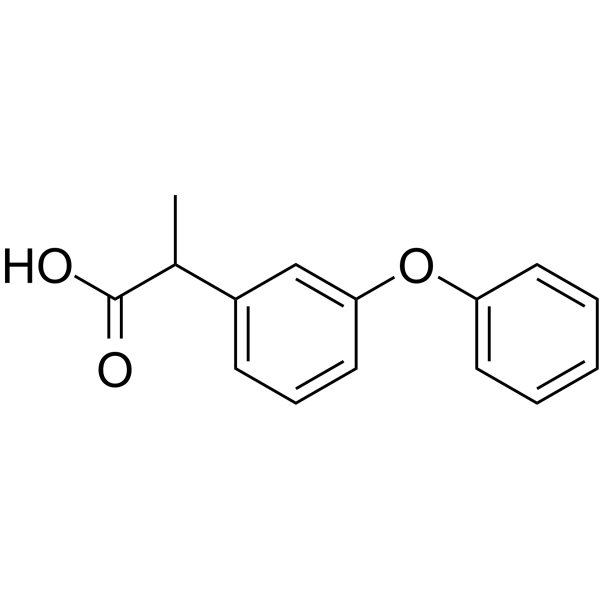
-
GC12840
HS 014
HS 014 ist ein potenter und selektiver Antagonist des Melanocortin-4 (MC4)-Rezeptors mit Kis-Werten von 3,16, 108, 54,4 und 694 nM für die menschlichen MC4-, MC1-, MC3- bzw. MC5-Rezeptoren.
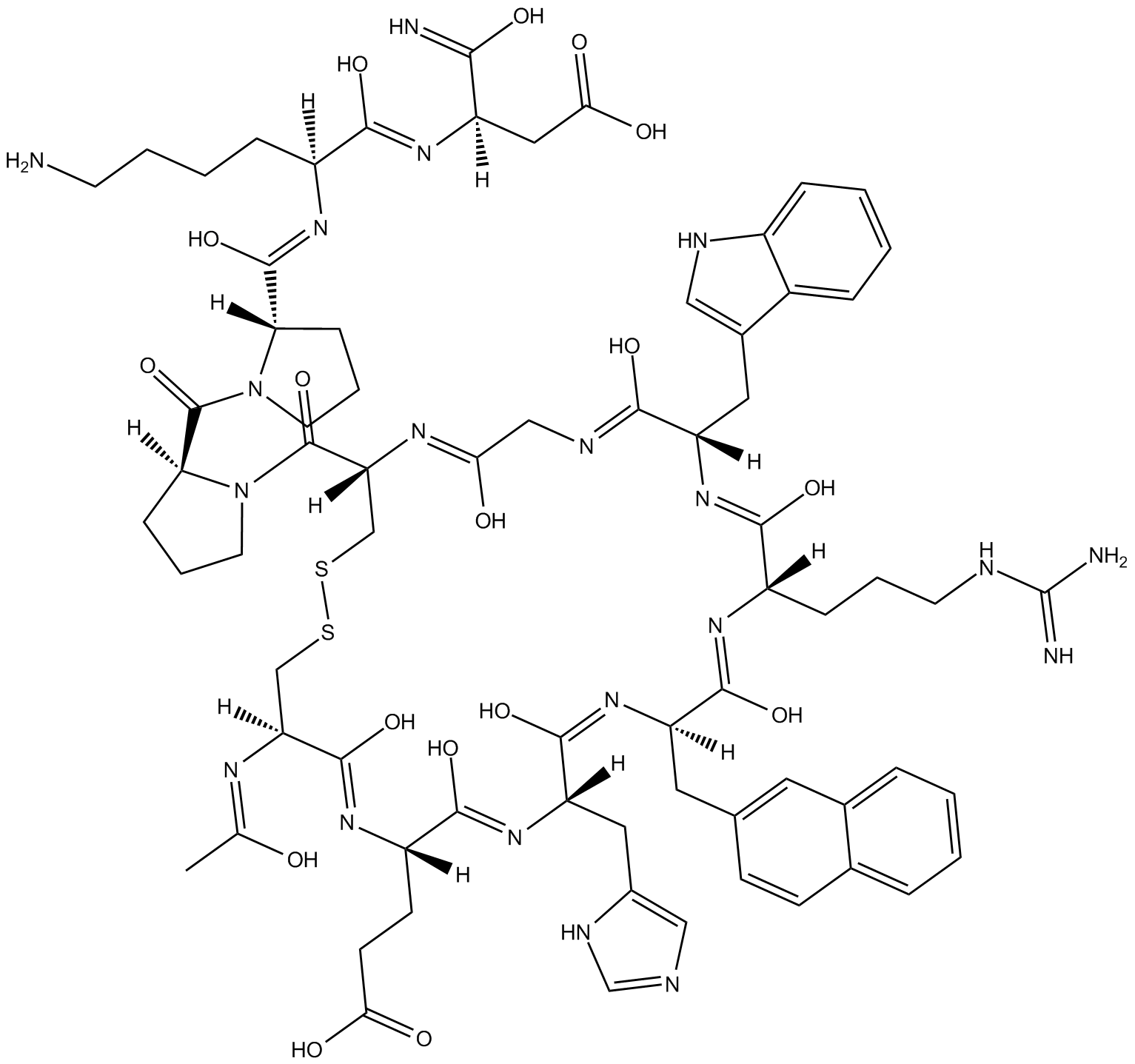
-
GC10747
HS 024
HS 024 ist ein selektiver MC4-Rezeptorantagonist mit Kis-Werten von 0,29, 3,29, 5,45 und 18,6 nM für MC4, MC5, MC3 bzw. MC1.
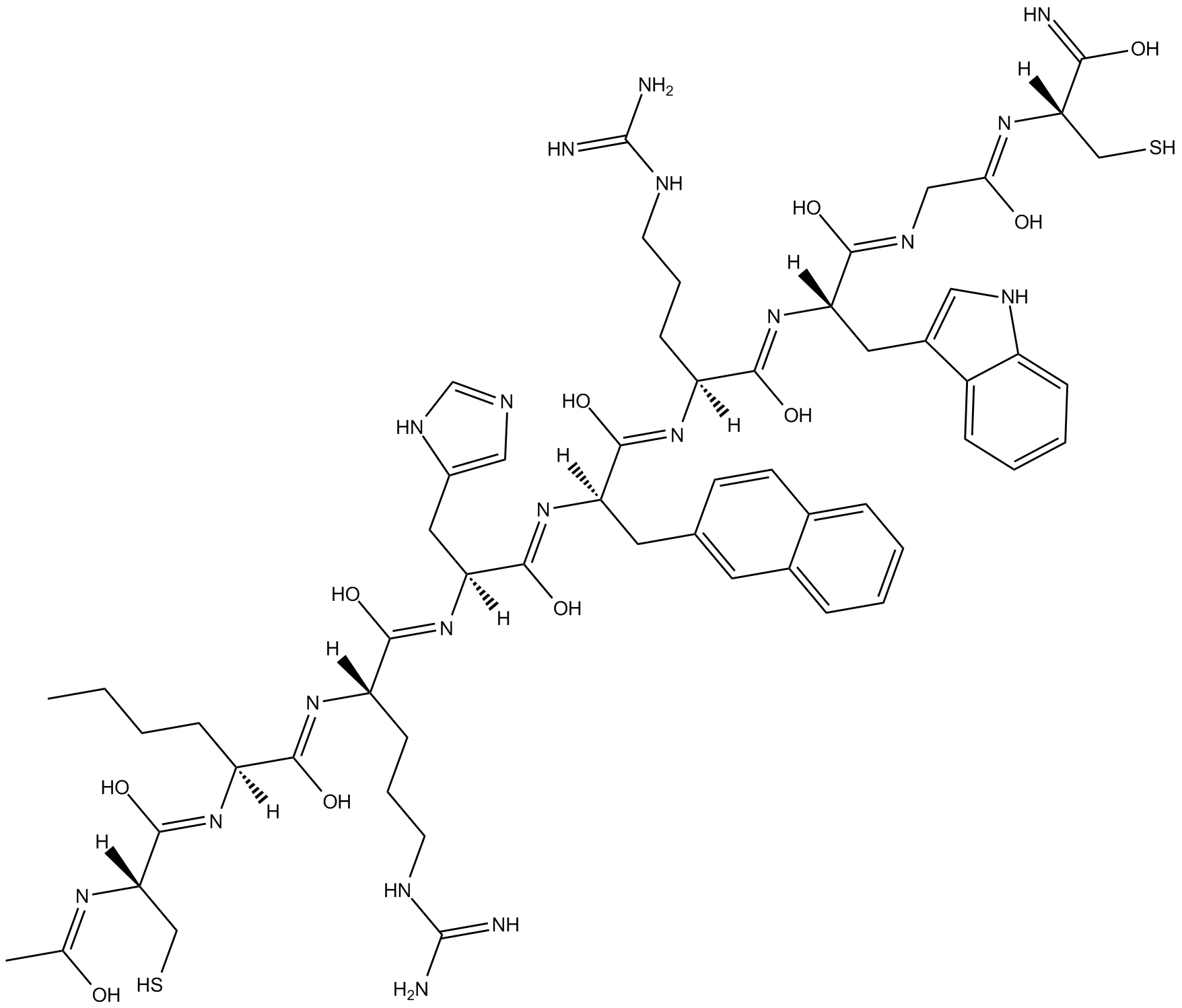
-
GC63724
HS014 TFA
HS014 TFA ist ein potenter und selektiver Antagonist des Melanocortin-4 (MC4)-Rezeptors mit Kis-Werten von 3,16, 108, 54,4 und 694 nM fÜr die menschlichen MC4-, MC1-, MC3- bzw. MC5-Rezeptoren.
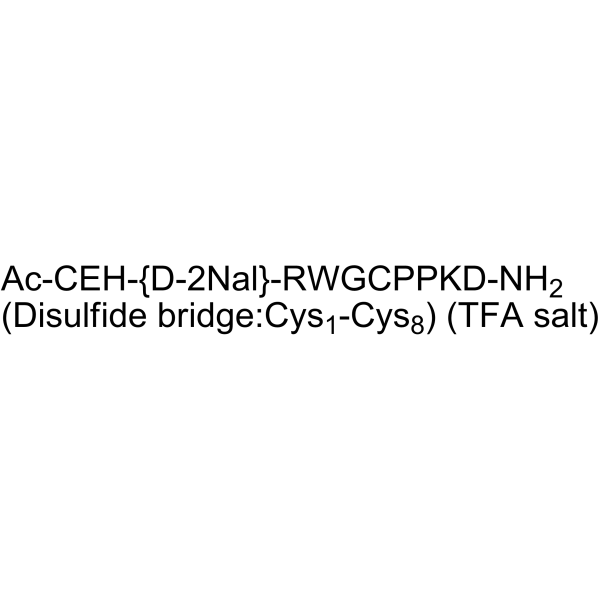
-
GC63770
HS024 TFA
HS024 ist ein selektiver MC4-Rezeptorantagonist mit Kis-Werten von 0,29, 3,29, 5,45, 18,6 nM fÜr MC4, MC5, MC3 bzw. MC1.
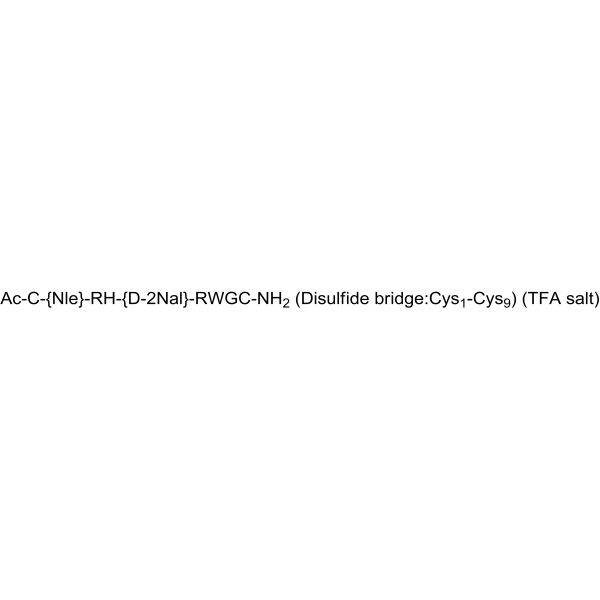
-
GC10701
JKC 363
JKC 363, ein selektiver Melanocortin-MC4-Rezeptorantagonist, hat eine 90-fach höhere Affinität am MC4-Rezeptor (IC50 \u003d 0,5 nM) als am MC3-Rezeptor (44,9 nM).
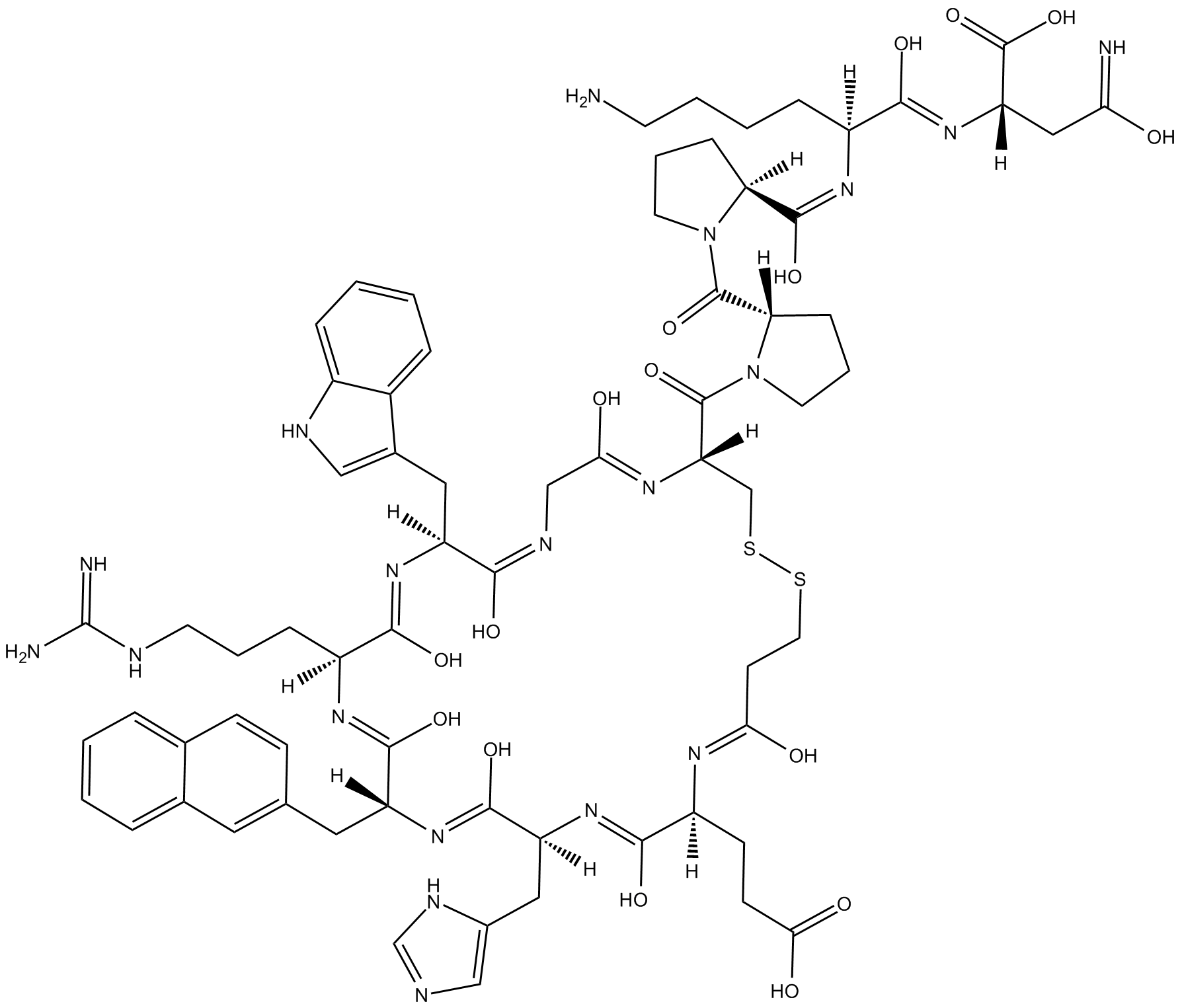
-
GC30194
JNJ-10229570
JNJ-10229570 ist ein Antagonist des Melanocortinrezeptors 1 (MC1R) und des Melanocortinrezeptors 5 (MC5R), der die Differenzierung der TalgdrÜsen und die Produktion talgspezifischer Lipide hemmt.
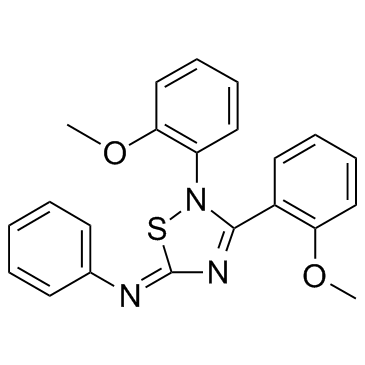
-
GC13806
Lys-γ3-MSH
Lys-γ3-MSH ist ein Melanocortin-Peptid, das vom C-Terminus des Fragments von Pro-Opiomelanocortin (POMC) abgeleitet ist.
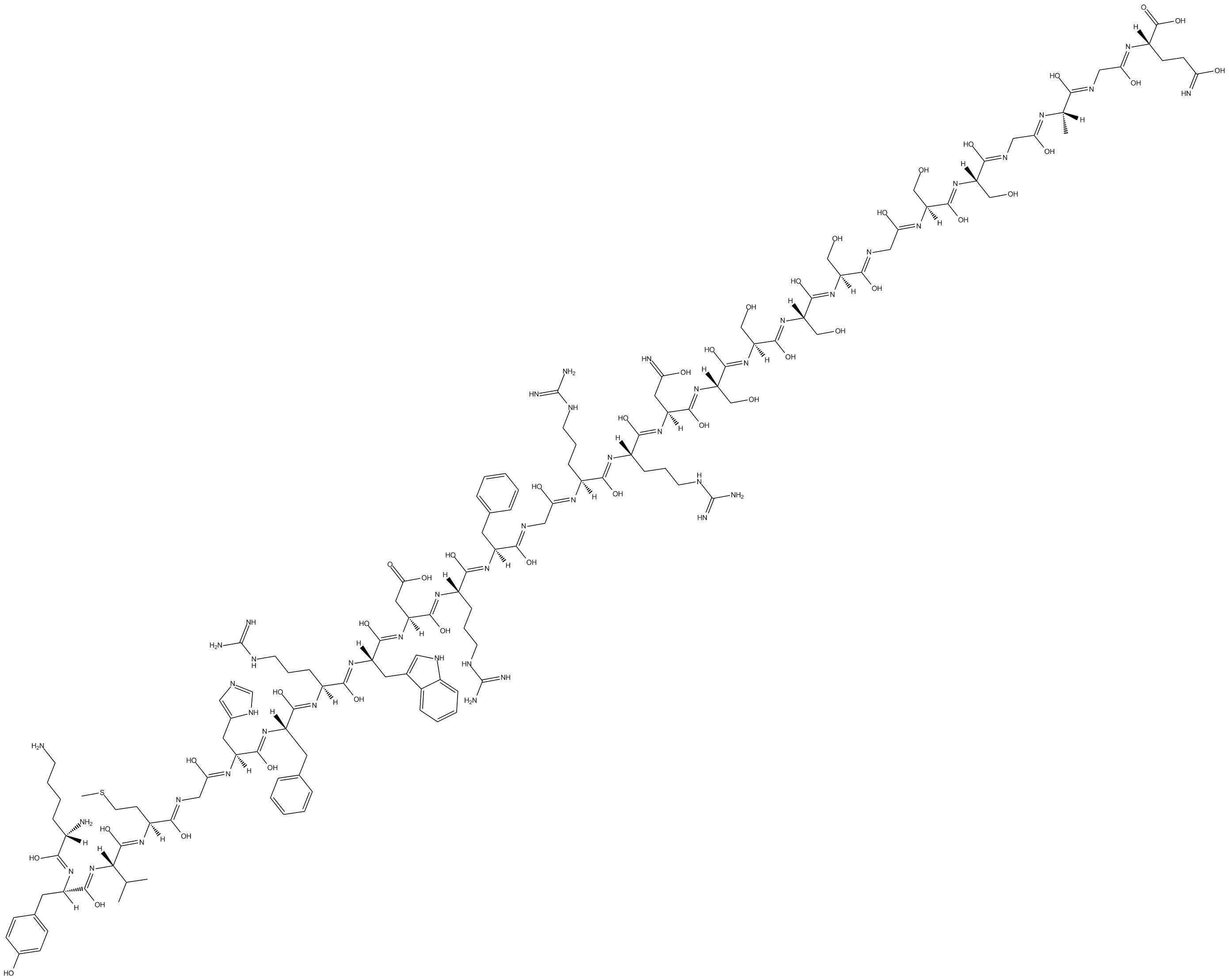
-
GC31629
MC-4R Agonist 1
MC-4R Agonist 1 ist ein Agonist des menschlichen Melanocortin-4-Rezeptors (MC-4R), der in der Erforschung von Fettleibigkeit, Diabetes und sexueller Dysfunktion eingesetzt wird.
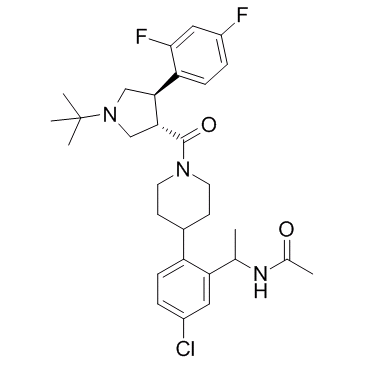
-
GC14127
MCL 0020
MCL 0020 ist ein potenter und selektiver Melanocortin-MC4-Rezeptorantagonist mit einem IC50-Wert von 11,63 nM.
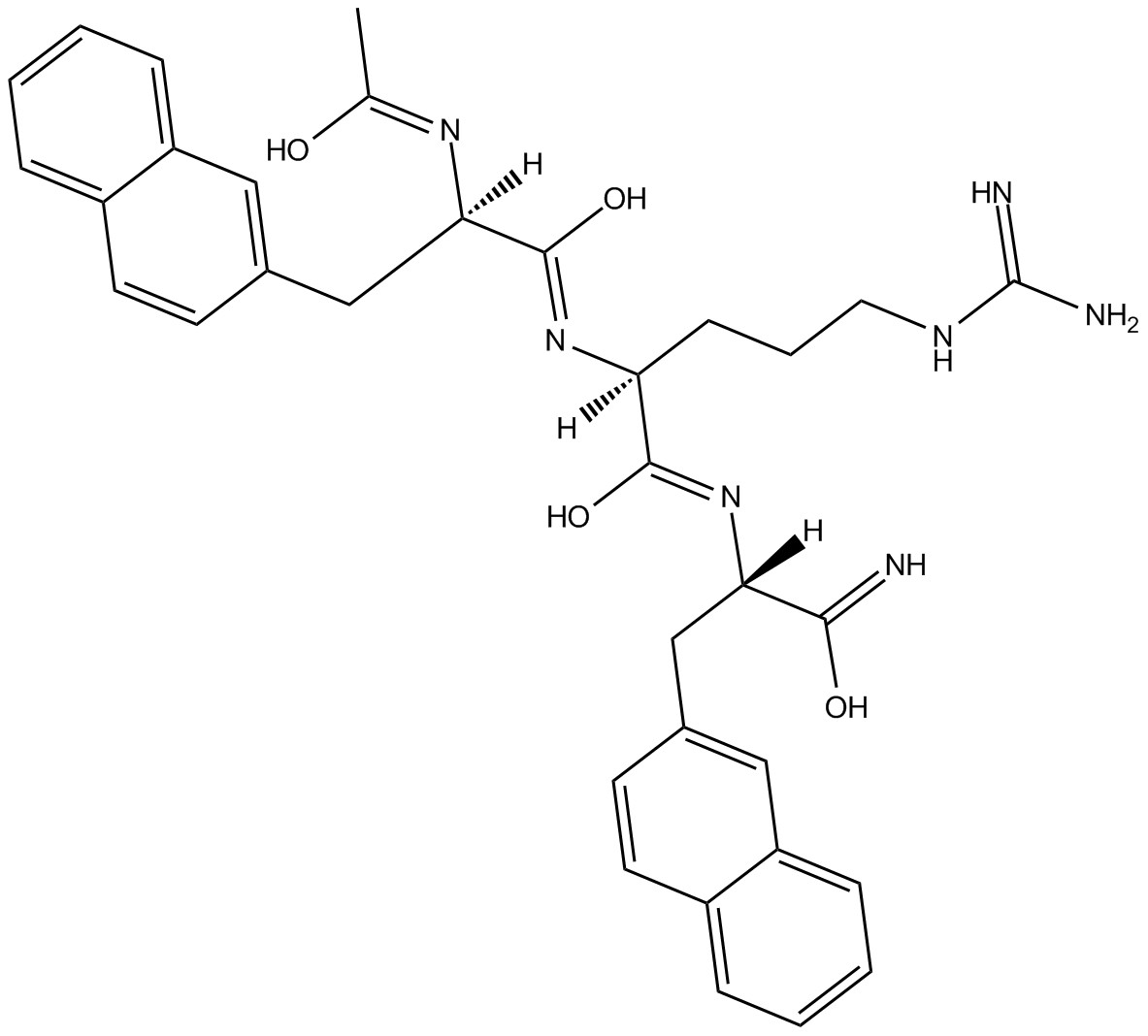
-
GC16276
Melanotan II
Melanotan II, ein synthetischer Melanocortin-Rezeptor-Agonist, ist ein injizierbares Peptidhormon, das zur FÖrderung der BrÄunung verwendet wird.
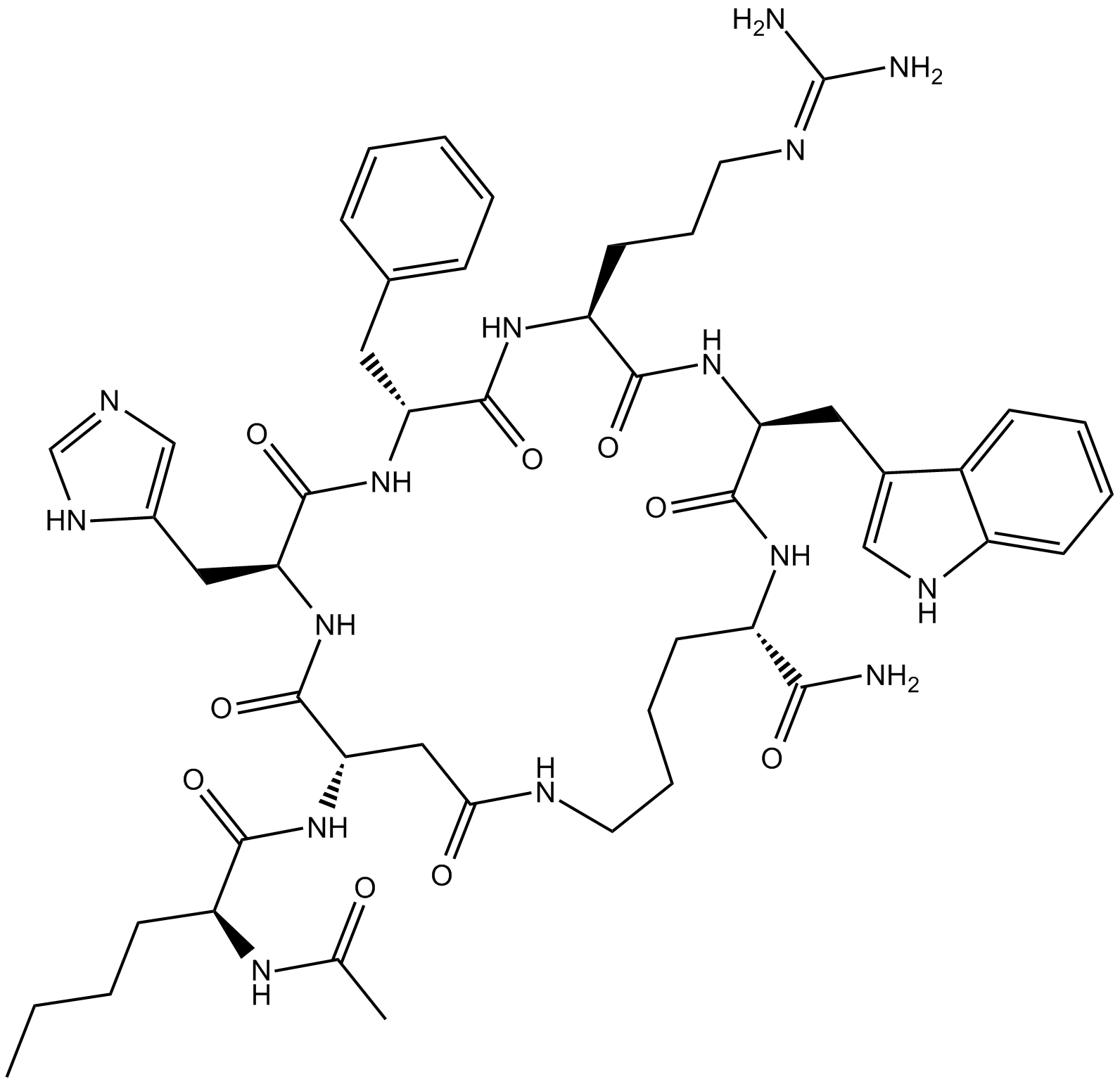
-
GC64427
MK-0493
MK-0493 ist ein potenter, oral aktiver und selektiver Agonist des Melanocortin-Rezeptors 4 (MC4R), der eine signifikante Verringerung der Energieaufnahme zeigt.
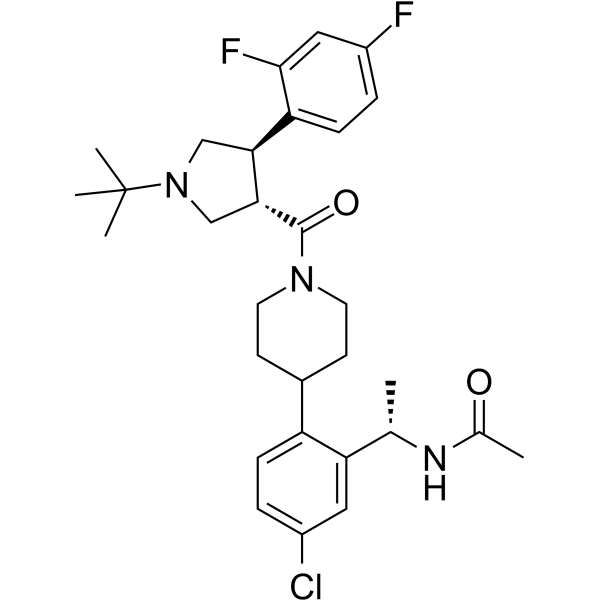
-
GC13798
ML 00253764 hydrochloride
ML 00253764 Hydrochlorid ist ein nicht-peptidischer Melanocortinrezeptor 4 (MC4R)-Antagonist, der das Gehirn durchdringt, mit einem Ki und IC50 von 0,16 µM bzw. 0,103 µM.
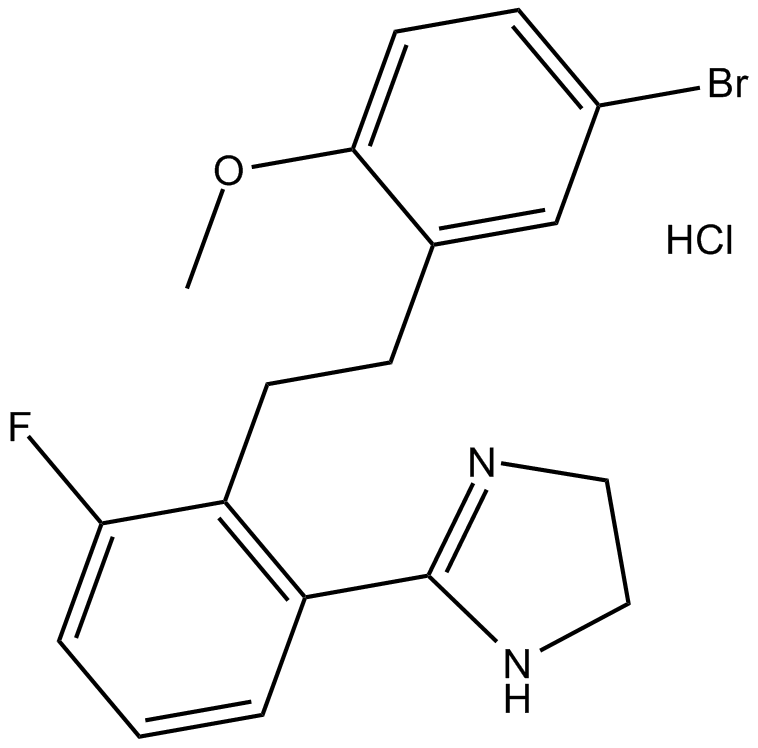
-
GC50303
MSG 606
MSG 606 ist ein selektiver MC1R (Melanocortin-1-Rezeptor)-Antagonist und kann zur Erforschung neuroprotektiver Wirkungen verwendet werden.

-
GC36727
Neuropeptide EI, rat
Das Neuropeptid EI der Ratte zeigt in verschiedenen Verhaltensparadigmen eine funktionelle antagonistische AktivitÄt des Melanin-konzentrierenden Hormons (MCH) und des Melanozyten-stimulierenden Hormons (MSH) .

-
GC36756
Nonapeptide-1 acetate salt
Nonapeptid-1 (Melanostatin-5)-Acetatsalz, ein Peptidhormon, ist ein selektiver Antagonist von MC1R (Ki: 40 nM).
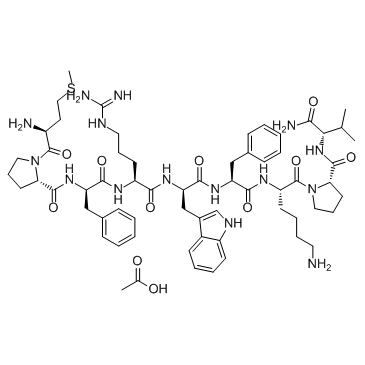
-
GC32420
PF-00446687
PF-00446687 ist ein potenter, selektiver Melanocortin-4-Rezeptor (MC4R)-Agonist mit einem EC50-Wert von 12±1 nM.
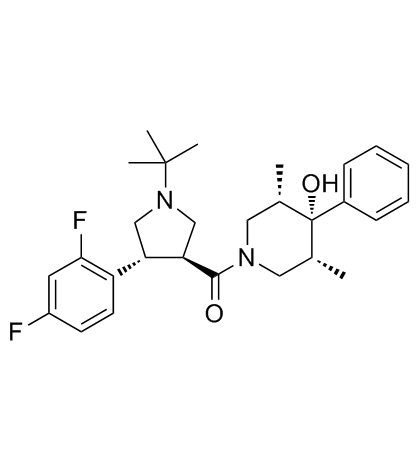
-
GC12163
PG 106
PG 106 ist ein potenter und selektiver humaner Melanocortin 3 (hMC3)-Rezeptorantagonist (IC50 \u003d 210 nM) und hat keine Aktivität an den hMC4-Rezeptoren (EC50 \u003d 9900 nM) und dem hMC5-Rezeptor.
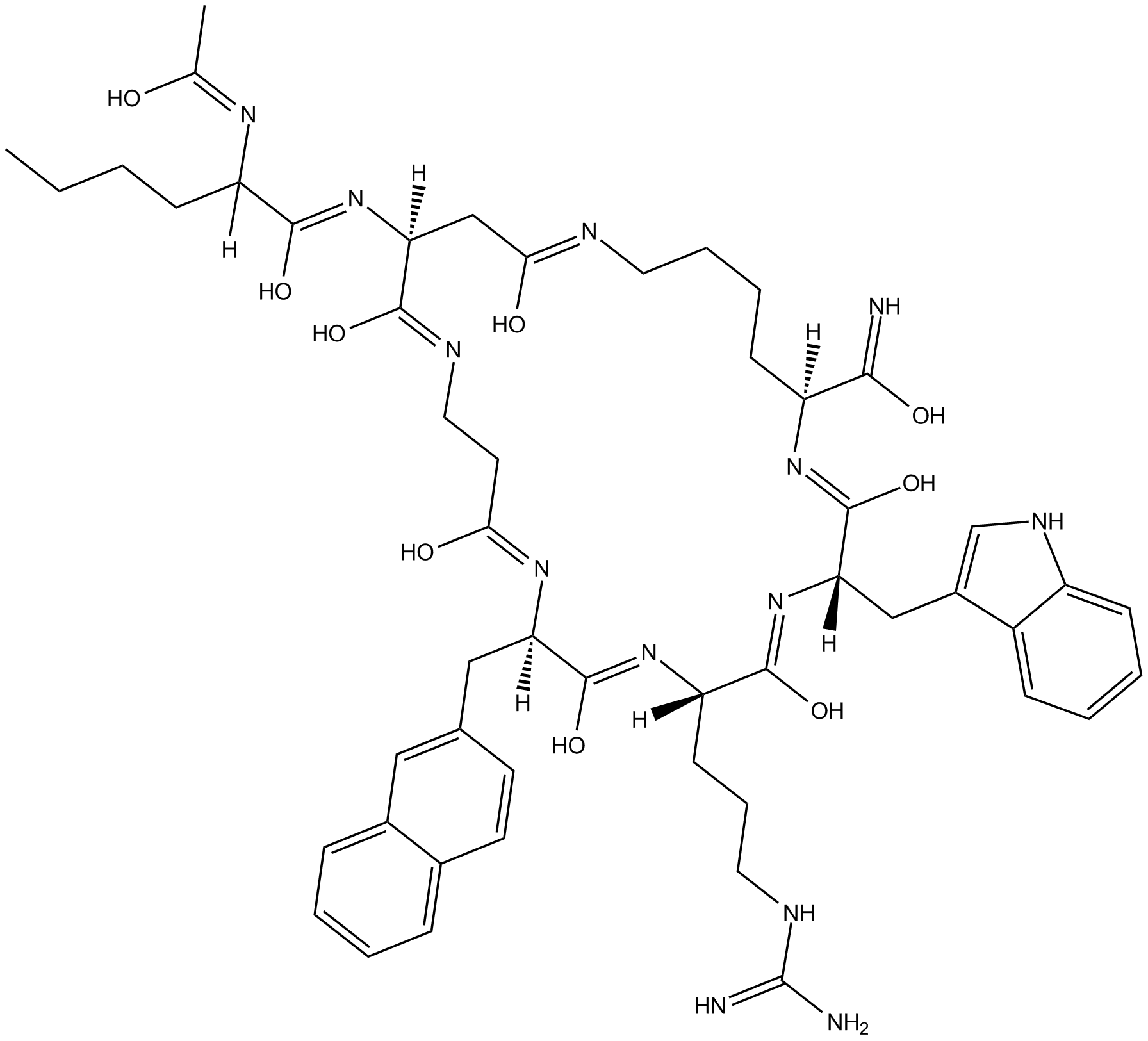
-
GC17626
PG 931
PG 931, ein Analogon von SHU 9119, ist ein potenter Melanocortin 4 (MC4)-Rezeptor (IC50 \u003d 0,58 nM)-Agonist und ist selektiver als für den hMC3R (IC50 \u003d 55 nM) oder den hMC5R (IC50 \u003d 2,4 nM).
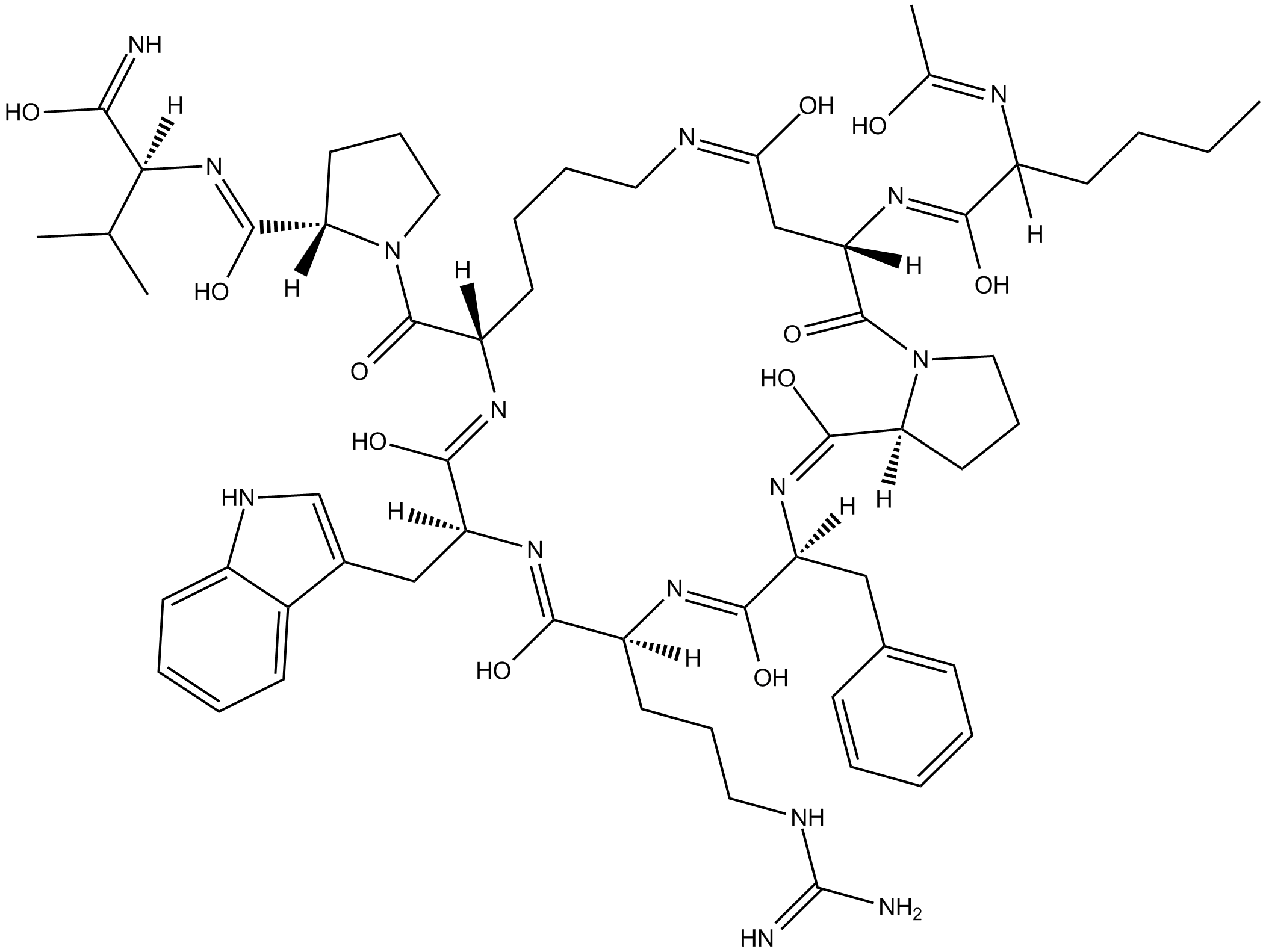
-
GC63756
PG106 TFA
PG106 TFA ist ein potenter und selektiver Antagonist des humanen Melanocortin 3 (hMC3)-Rezeptors (IC50 = 210 nM) und hat keine AktivitÄt an den hMC4-Rezeptoren (EC50 = 9900 nM) und dem hMC5-Rezeptor.
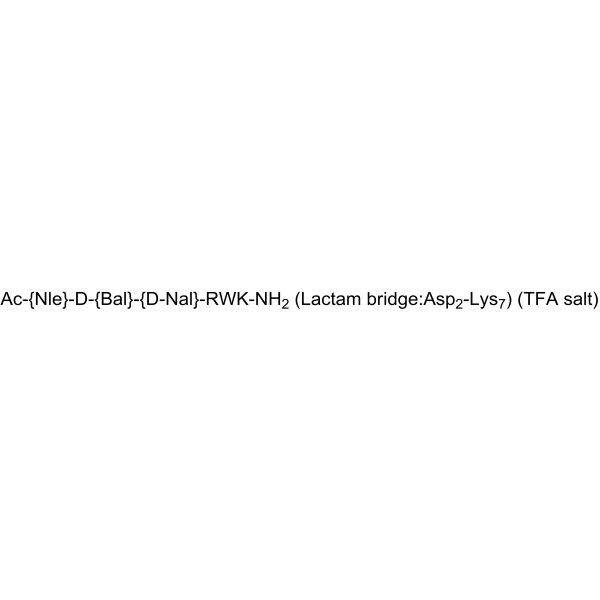
-
GC69813
Resomelagon
Resomelagon (AP1189) is an orally effective melanocortin receptor (MR) agonist, including MC1 and MC3. Resomelagon induces ERK1/2 phosphorylation and Ca2+ flow. Resomelagon has anti-inflammatory activity. Resomelagon can be used for obesity and chronic inflammation research.
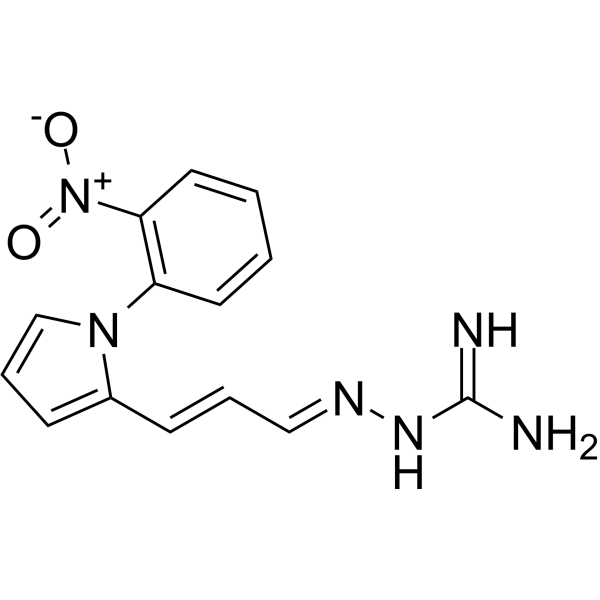
-
GC69814
Resomelagon acetate
Resomelagon (AP1189) Acetat ist ein oral wirksamer Agonist des Melanocortin-Rezeptors (MR), einschließlich MC1 und MC3. Resomelagon-Acetat induziert ERK1/2-Phosphorylierung und Ca2+-Fluss. Resomelagon-Acetat hat entzündungshemmende Aktivität. Resomelagon-Acetat kann für die Erforschung von Fettleibigkeit und chronischen Entzündungen verwendet werden.
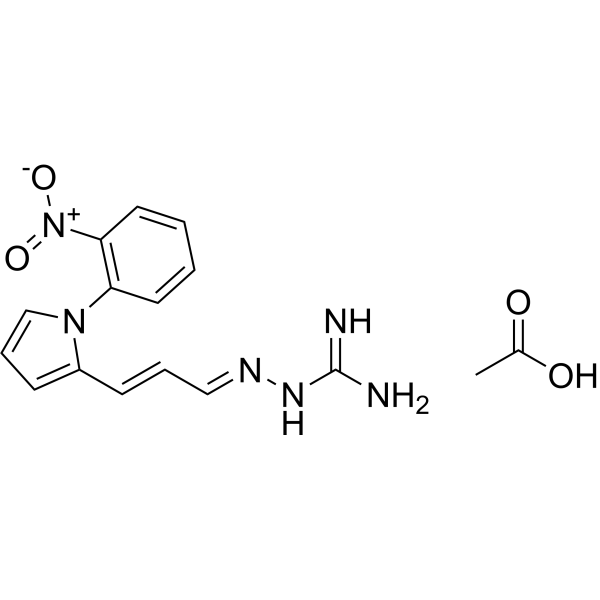
-
GC37629
Setmelanotide TFA
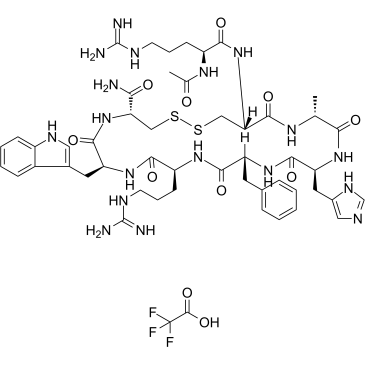
-
GC13565
SHU 9119
SHU 9119 ist ein potenter humaner Melanocortin 3- und 4-Rezeptor (MC3/4R)-Antagonist und ein partieller MC5R-Agonist; mit IC50-Werten von 0,23, 0,06 und 0,09 nM fÜr menschliches MC3R, MC4R bzw. MC5R.
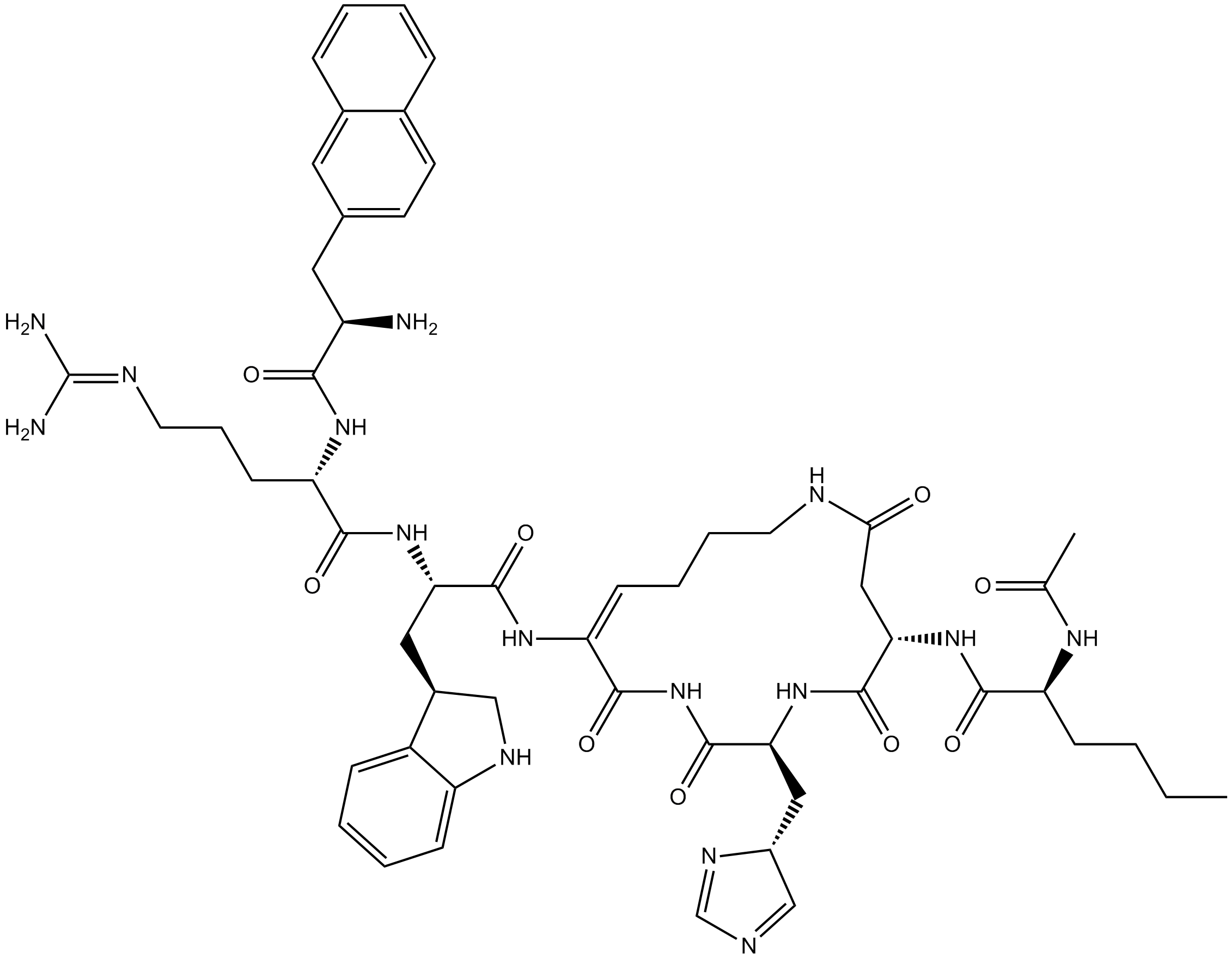
-
GC31600
SNT-207707
SNT-207707 ist ein selektiver, potenter und oral aktiver Melanocortin-MC-4-Rezeptorantagonist mit einer IC50 von 8 nM (Bindung) und 5 nM (Funktion) am MC-4-Rezeptor.
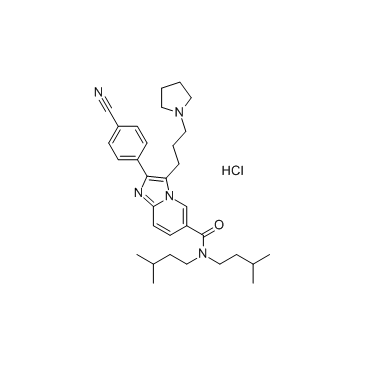
-
GC31560
SNT-207858
SNT207858 ist ein selektiver, die Blut-Hirn-Schranke durchdringender, potenter und oral aktiver Melanocortin-4 (MC-4)-Rezeptorantagonist.
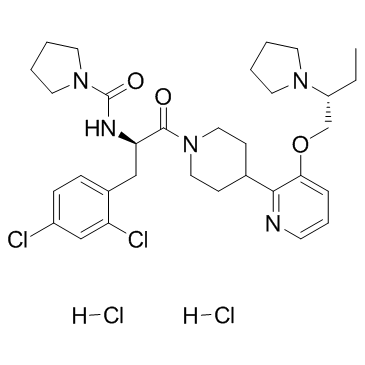
-
GC38107
SNT-207858 free base
Die freie Base SNT207858 ist ein selektiver, die Blut-Hirn-Schranke durchdringender, potenter und oral aktiver Melanocortin-4 (MC-4)-Rezeptorantagonist.
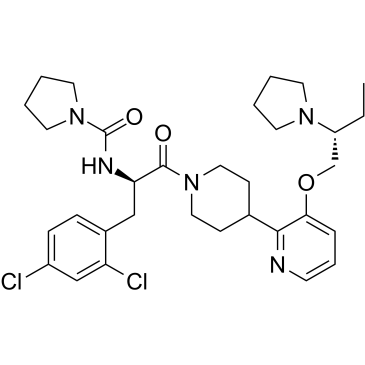
-
GC18458
Terrein
Terrein ist ein Melanogenese-Hemmer. Terrein induziert Apoptose in Brustkrebszelllinien. Terrein ist ein Inhibitor von Quorum Sensing und c-di-GMP in Pseudomonas aeruginosa.

-
GC16069
THIQ
THIQ ist der erste selektive Agonist des Melanocortin-4-Rezeptors (MC4R) mit hoher AffinitÄt und Wirksamkeit fÜr hMC4R (IC50=1,2 nM, EC50=2,1 nM) und rMC4R (IC50=0,6 nM, EC50=2,9 nM).
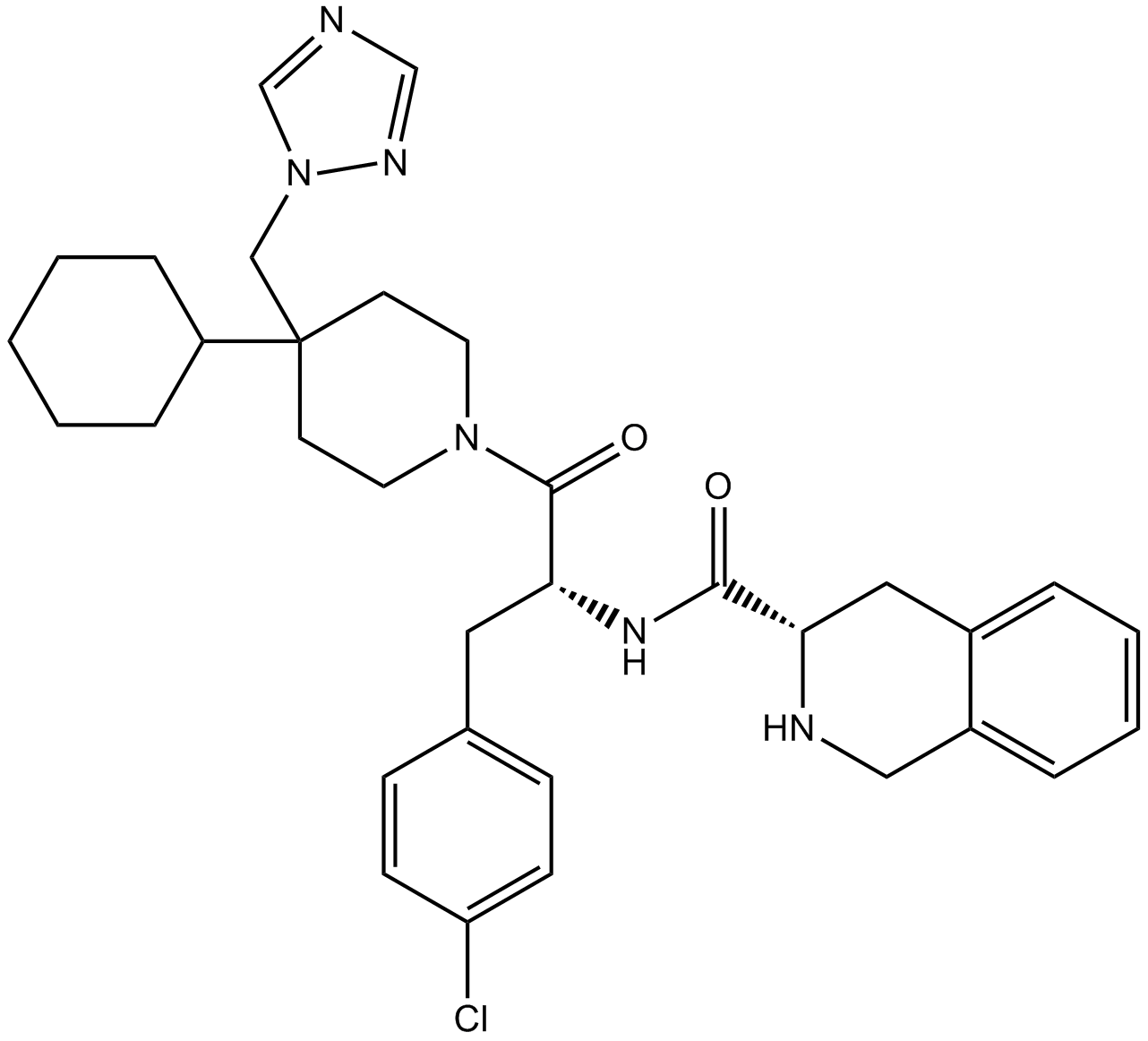
-
GC10947
[D-Trp8]-γ-MSH
[D-Trp8]-γ-MSH ist ein potenter und selektiver Agonist des Melanocortin 3 (MC3)-Rezeptors mit IC50-Werten von 6,7 nM, 600 nM und 340 nM fÜr hMC3, hMC4 bzw. hMC5 in CHO-Zellen.
![[D-Trp8]-γ-MSH Chemical Structure [D-Trp8]-γ-MSH Chemical Structure](/media/struct/GC1/GC10947.png)
-
GC13068
[Nle4,D-Phe7]-α-MSH
[Nle4,D-Phe7]-α-MSH ist ein potenter nicht-selektiver Melanocortin-Rezeptor (MCR)-Agonist. [Nle4,D-Phe7]-α-MSH ist ein synthetisches Analogon von α-Melanozyten-stimulierendem Hormon (α-MSH), das die Melanogenese stimuliert. [Nle4,D-Phe7]-α-MSH kann HautbrÄunung induzieren, indem es die Wirkung von a-MSH auf die Melanocortin-Typ-1-Rezeptoren (MC1R) von Melanozyten nachahmt. [Nle4,D-Phe7]-α-MSH kann fÜr die Erforschung von durch Sonnenlicht verursachtem Hautkrebs verwendet werden.
![[Nle4,D-Phe7]-α-MSH Chemical Structure [Nle4,D-Phe7]-α-MSH Chemical Structure](/media/struct/GC1/GC13068.png)
-
GC14374
α-MSH
Endogener Melanocortin-Rezeptor-Agonist



